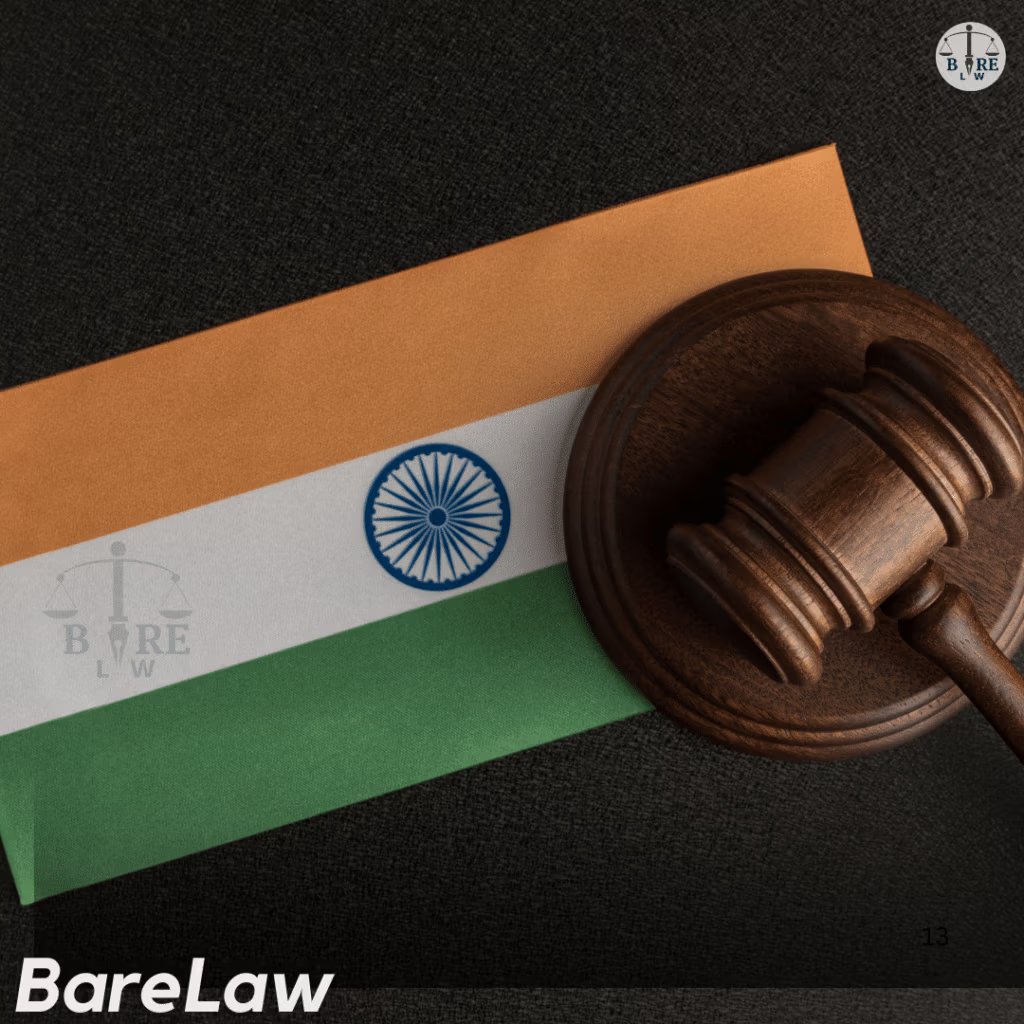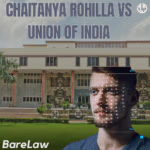The Delhi High Court has directed the Central government to form a committee to address the misuse of deepfake technology, which involves AI-generated fake videos and images that can be used for misinformation, defamation, and fraud. The initiative aims to develop a regulatory framework, engage with stakeholders, and submit actionable recommendations within three months.

These People Can Secure Your Deepfake Videos Now: Committee formed by Delhi high Court
The Delhi High Court‘s recent directive to the central government to take note of the threats posed by deepfake technology to safeguard digital integrity is a welcome development. In response to journalist Rajat Sharma and advocate Chaitanya Rohilla’s petitions, the court pointed out that the need to swiftly establish robust mechanisms to curb the misuse of deepfakes was of growing importance.
Understanding Deepfake Technology
Using artificial intelligence — specifically, Generative Adversarial Networks (GANs) — deepfake technology generates remarkably real but fake images, audio, or videos. Although the technology was once heralded for its potential in the entertainment, education, and advertising industries, it’s now being taken over by nefarious actors.
How Deepfakes Work:
- Data Collection: Deepfake models need large datasets of the target’s facial expressions, voice samples, or body movements to generate convincing fakes.
- Model Training: Two neural networks, generator and discriminator, compete, and GANs are used. The generator generates fake data, and the discriminator judges its truthfulness.
- Refinement: As the generator shifts its outputs over time, we see the outputs grow closer to genuine content.
The Growing Misuses of Deepfake Technology
While deepfakes can be used positively—such as in movie production, historical recreations, or educational content—they have increasingly become tools for:
- Political Manipulation: Deepfakes can weaponize misinformation in elections. For instance, doctored videos of political leaders making politically inflammatory remarks can destabilize public trust, leading to voter behaviour.
- Defamation and Harassment: There has been exploitation of persons, particularly women, through fake stories, including in pornographic videos whose likeness is then used by sellers of the videos, causing irreparable harm to the reputation and emotional well-being of such persons.
- Identity Theft and Fraud: Fraudsters use deepfake audio or video to impersonate individuals to collect sensitive information and approve fraudulent transactions. In another case, a deepfake voice impersonated a CEO (facilitated by a deepfake text), causing $243,000 to be transferred into the scammer’s account.
- Misinformation Campaigns: Fabricated news or events were spread using Deepfakes, thereby undercutting the credibility of journalism and false media gatherings.
Recent Developments in India
The Delhi High Court, on November 21, 2024, ordered the Ministry of Electronics and Information Technology (MEITY) to constitute a committee to deal with deepfake challenges. This committee will:
- We must engage in a dialogue with stakeholders, including the public, internet intermediaries, telecom service providers, victims, and websites that deploy deepfake technology.
- Propose comprehensive solutions (alongside studying international regulations such as the European Union’s AI Act).
- It will submit its findings within three months before the next U.S. court hearing on March 24, 2025.
Additionally, MEITY has revealed plans to:
- Finance the research of deepfake detection tools.
- We develop software and platforms for identifying manipulated content.
- Train and improve detection algorithms by crowdsourcing video samples.
Protecting Ourselves from Deepfake Misuse
- Media Literacy: People should also be educated on how to spot manipulated content, such as unnatural facial expressions, irregular eye movements, or mismatched audio and video.
- Verification Tools: To that end, individuals and organizations can leverage AI-powered detection tools like Microsoft’s Video Authenticator or Reality Defender to authenticate content.
- Awareness Campaigns: Governments and civil society organizations should run awareness campaigns to raise public awareness of the dangers of deepfakes.
- Enhanced Cybersecurity: Sensitive data should be protected by companies and individuals using strong cybersecurity measures like multi-factor authentication.
Legal Framework in India
India currently lacks legislation explicitly addressing deepfake technology, but existing laws offer partial protection:
- Information Technology Act, 2000:
- Section 66E: Penalizes the violation of privacy through images or videos.
- Section 67 Deals with publishing or transmitting obscene material electronically.
- Section 66D: Criminalizes cheating by impersonation using computer resources.
- Indian Penal Code (IPC):
- Section 499 and 500: Address defamation, which can be invoked in cases where deepfakes tarnish someone.
- Section 465: Pertains to forgery, which could include digitally manipulated content.
- Section 354C: Penalizes the non-consensual dissemination of intimate images or videos, including deepfakes.
- Data Protection Bill, 2021: Though still pending, the bill emphasizes data privacy and could provide additional safeguards against the misuse of personal data in deepfake generation.
Global Regulatory Approaches
- European Union (EU): The EUEU’s I Act considers deepfake technology high risk and requires disclosure when AI-generated content is used.
- United States: California and Texas, among some other states, passed laws criminalizing the non-consenting use of deepfakes for political campaigns or pornography.
Famous Examples of Deepfake Misuse
- Barack Obama Speech: A viral deepfake video shows former President Barack Obama saying controversial things. It turned out to be a made-up video that was used as an example of the dangers of new technology.
- Mark ZuZuckerberg’sddress: He became the latest fake victim of a deepfake, i.e., a video that contains forged and manipulated content — this time, it was a video of Mark Zuckerberg, CEO of Meta, saying fictitious things about, yes, data manipulation.
- Indian Elections 2019: Deepfake videos were used to translate campaigning speeches into multiple languages as India held general elections, with questions about authenticity and transparency.
- Celebrity Exploitation: Many of the most prominent actresses, including Scarlett Johansson and Gal Gadot, have been the victim of deepfake pornography; worldwide outrage followed.
Conclusion
This inherently means that a multi-faceted approach to deepfakes will be needed involving regulation, technological innovation, and driving public understanding as the sophistication of the technology continues to grow. The Delhi High CouCourt’srward-looking approach to the issue indicates the seriousness with which this issue is assailed and that mitigation of the risk posed by deepfakes requires collective effort and expediency, albeit in a manner that quickly captures deepfakdeepfakes’ial for societal good. India must stay vigilant as the legal & technological landscape changes and ensure that AI and such innovations are used responsibly.
FAQ
1. What are deepfakes?
Deepfakes are AI-generated videos, audio, or images that imitate real people, often used maliciously to spread misinformation, commit fraud, or harass individuals.
2. How can deepfakes be harmful?
Deepfakes can damage reputations, spread fake news, influence elections, and enable financial fraud or cybercrimes.
3. Are there laws in India against deepfakes?
India does not have specific deepfake laws, but the IT Act, 2000, and sections of the IPC address related offenses like defamation, impersonation, and violation of privacy.
4. How can I protect myself from deepfakes?
Stay informed, verify suspicious content, use deepfake detection tools, and ensure strong cybersecurity measures.
5. Are there any famous examples of deepfakes?
Notable cases include a deepfake of Barack Obama making fabricated statements and fake pornographic videos of celebrities like Scarlett Johansson.
6. What is the global stance on deepfake regulation?
The EU’s AI Act and some U.S. state laws categorize deepfakes as high-risk and mandate transparency in their use, particularly in sensitive domains like politics and media.
This Reply Can End Your Marriage
This Reply Can End Your Marriage, Art of Reply On Divorce Petition On The Behalf of WifeIntroduction:Understanding the Divorce Petition:Drafting…
Muslim Marriages and Divorce in India |BareLaw
Authored By – Kanika Arora Muslim Marriages and Divorce Authored By – Kanika AroraMuslim Marriages and DivorceIntroductionMuslim law on marriageNature…
These People Can Secure Your Deepfake Videos Now
The Delhi High Court has directed the Central government to form a committee to address the misuse of deepfake technology,…
Your Case Number Exceeds the Population of Many Countries
India’s burgeoning judiciary cannot keep up with that country’s burgeoning needs. Reiterating his dire warning about the gap between the…





